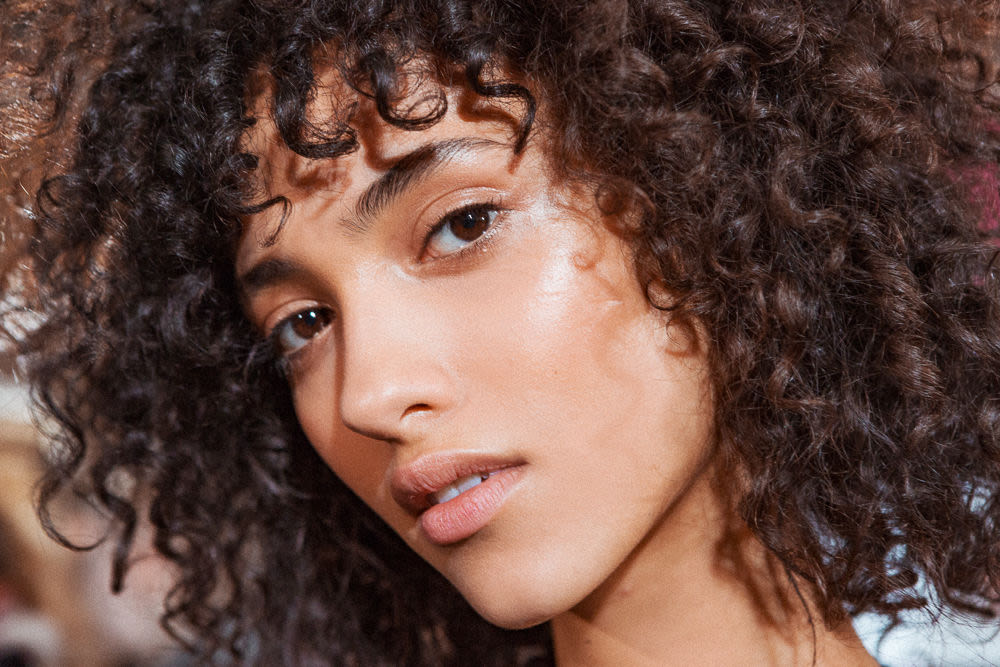You finally did it. You went HAM on your face, piling on every potent skincare product within reach. Your face: flaky, inflamed, covered in tiny bumps, and tender to the touch. Your heart: betrayed by a foolproof 14-step routine. But there’s no time for tears (they hurt your face too much)—instead, it’s time to take action. While a number of factors can trigger skin irritation—allergens, pollutants, and highly acidic or basic ingredients to name a few—they produce an overall similar effect, in that they compromise your skin’s protective barrier. This barrier is called the stratum corneum in science-speak, and as the outermost layer of skin it functions to keep water in, and bad guys, like bacteria, out. It’s your skin’s defense system. But there’s no such thing as a foolproof defense system—there will be cracks! Especially when it’s overwhelmed with too many different products.
To bring your skin back to normal, you’ll need to cut back. First, take a look at your skincare. Have you tried something new recently? What do the ingredients say? Is there a fragrance in there? An oil that’s new-to-you? Put it aside for now and focus on the basics. You know how the BRAT elimination diet works to soothe upset stomachs? Welcome to the BRAT diet of skincare, where the only the blandest skincare ingredients will do. Follow these steps to return your skin from the brink:
Step 1: Hydrate
Happy skin is hydrated skin, but it’s tough to hydrate when you’re using a drying cleanser. Stick to the one brand that virtually every dermatologist gives a 5-star rating: CeraVe. Its line of fragrance-free, no-fuss products are an antidote to irritation. The créme de la créme: The Hydrating Facial Cleanser. It leaves skin feeling supple, and it sets your skin up for success with hydrating hyaluronic acid and skin barrier-reinforcing ceramides.
Step 2: Restore
Lay off exfoliants and low pH products, even if they’ve never given you trouble. Now’s the time to fortify and heal your skin with products that mimic its composition. If you insist on using a serum, look for one with hyaluronic acid, ceramides, cholesterol or a fatty acid as the hero ingredient. One option: the Omega+ Complex Serum from Paula’s Choice. Another is Glossier’s Super Bounce, which uses three different hyaluronic acid molecules for immediate and prolonged hydration.
Step 3: Moisturize
On the moisturizer front, Stratia’s Liquid Gold is the gold (sorry) standard. The formula is light enough to sit in a pump bottle, but still, it’s a serious mix of powerhouse ingredients. Ceramides, cholesterol, and fatty acids from oils all work to protect your face from irritation.
If you’re feeling a little adventurous, add a few drops of a plant-derived oil for added effect. Plant-derived oils like jojoba, squalane, sea buckthorn, and rosehip are proven inflammation reducers, and promote wound healing and skin barrier repair.
Not an oil fan? No problem. Try a thick, uncomplicated cream instead. Ultra Repair Cream Intense, Avène’s Cicalfate Restorative Skin Cream, and Dr. Jart’s Ceramidin Cream are all rich and enriching.
Step 4: Protect
The sun will always be your nemesis—especially when you’re dealing with compromised skin. That’s when UV rays can wreak even more havoc, and contribute to hyperpigmentation and inflammation. Again, for the people in the back: lay on the sunscreen! Preferably, a reliable one with a soothing ingredient like zinc.
Step 5: Wait
Like firm, radiant skin, good things come to those who wait. Stick to your pared-down routine for at least two weeks—preferably a month, which is roughly how long it takes skin cells to renew. At that point you can reintroduce more potent, complicated skincare back into your routine. Do it gradually, so if your skin does react, you’ll quickly be able to identify the source. And at least that time you’ll know what to do.
Photo via ITG.

